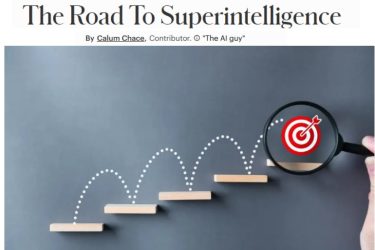Accountants and lawyers to use AI to cannibalise their business – before someone else does
When you hear the word “automation…”, does your mind skip straight to “…destroys jobs”? If so, there should be a few stops in between. Automation is about removing friction, driving down costs, speeding processes up, and generally improving efficiency. Making goods and services better and cheaper is a good thing: it makes us all richer.
There is scope to do this in all walks of life, and not least in professional services, such as accountancy and the law. Much of the work done by the firms in these sectors is searching for and compiling data. Their work would be greatly improved and speeded up if data retrieval could be automated, if databases were compatible, and if multiple databases could be interrogated simultaneously.
Traditional databases don’t talk to each other. The questions that can be asked of each of them are fixed – designed in at the start. Big companies have thousands of them. In the 1990s, companies began installing Enterprise Resource Planning (ERP) systems which bring together all the data about a particular business process in one master database. But large companies still have many ERPs – often as many as 300. And guess what, these don’t usually talk to each other.
Knowledge graphs
A newer type of database called a “knowledge graph” is more flexible. Google introduced this concept to its search operations in 2012 (coincidentally, the same year as the Big Bang in artificial intelligence, when machine learning began to make AI so powerful). Knowledge graphs link triplets of information – subject, object, and the relationship between them. This allows you to get precise answers to rich and complex questions.
The problem with knowledge graphs is that they are time-consuming and expensive to populate. This problem is being mitigated by the rapid improvements in an aspect of AI called natural language processing. NLP systems such as Google’s BERT (Bidirectional Encoder Representations from Transformers, since you asked) enable knowledge graphs to be populated automatically, by furtling around in giant corpuses of text and tables, hunting down and extracting relevant but unstructured data.
Using BERT to populate knowledge graphs in professional services
A startup called Engine B is looking to capitalise on this emerging capability in the professional services industry. It employs only nine people today, and has only raised £3.5m so far. But founder and CEO Shamus Rae says that the company’s partners and backers are what makes it promising: they include all four large accountancy firms, plus several of the next tier and challenger firms. Plus the accountants’ UK trade body, the Institute of Chartered Accountants in England and Wales (ICAEW). It is also working with a number of leading law firms.
The company is building and populating its models with input from academics at Imperial College and Birmingham University, and is hosted on Microsoft’s Azure platform, because unlike Google, for instance, Microsoft forswears going into industry verticals to compete with incumbents.
If Engine B succeeds, it will operate as a platform, charging users micro-payments as they process data. The data belongs to the customer, and it stays where it is – inside the company’s servers (whether in a cloud service, or owner-hosted). Engine B’s knowledge graphs will be applied to the data in the form of an API. Shamus Rae says that “we will not anonymise anyone’s data and resell insights from it, and our code is open source”.
A single source of truth
The result, Rae claims, is a “single source of truth”, where questions can be asked of a company’s knowledge base which were never envisaged when the data was collected. For instance, the knowledge graph for a property company could be interrogated to find out which buildings in the portfolio have the kind of cladding which caused the Grenfell Tower tragedy, and which of those were installed by the same contractor. It becomes much easier to check the integrity of a company’s data lakes, and to check for fraud and defend against cyber attacks.
If this approach is successful, it will automate a lot of the work which is currently done by accounting firms. The big firms employ thousands of people to do “ticking and bashing” – obtaining financial information about the client’s activities, and checking it for consistency against other sources. This work will increasingly be automated, which means less boredom for junior accountants – but probably also means fewer junior accountants. The same goes for lawyers and their disclosure and discover processes. Due diligence – the investigation and evaluation of a target company – will become much easier and faster, and mergers, acquisitions, and investment should be speeded up dramatically.
“Enabling people to do what they know good would look like, if only it were possible”
Dan Wright, a partner at international law firm, Osborne Clarke, shares Rae’s hopes for the initiative. “By systemically unearthing the connections between data, we open up entirely new ways of executing legal processes. The knowledge graph approach is all about technology enabling people to do what they know good would look like, if only it were possible. We’ll hopefully show it is possible.”
Since knowledge graphs will eliminate a lot of the work that accountants and lawyers do today – and charge for – you might think they would resist it rather than back it. But the people running these firms recognise that automation is coming. They know that if they do not cannibalise their own businesses and adopt the coming business models, then someone else will. They are using this sort of initiative to force through the digitisation of their businesses, and retain a degree of control over the process as it happens.
As Rae puts it, “In reality jobs will go and jobs will change. The firms that prosper will be the ones that grab the opportunity first to re-skill their technology and their people. The future is not about number-crunching transactions, but about judgement and wisdom.”



